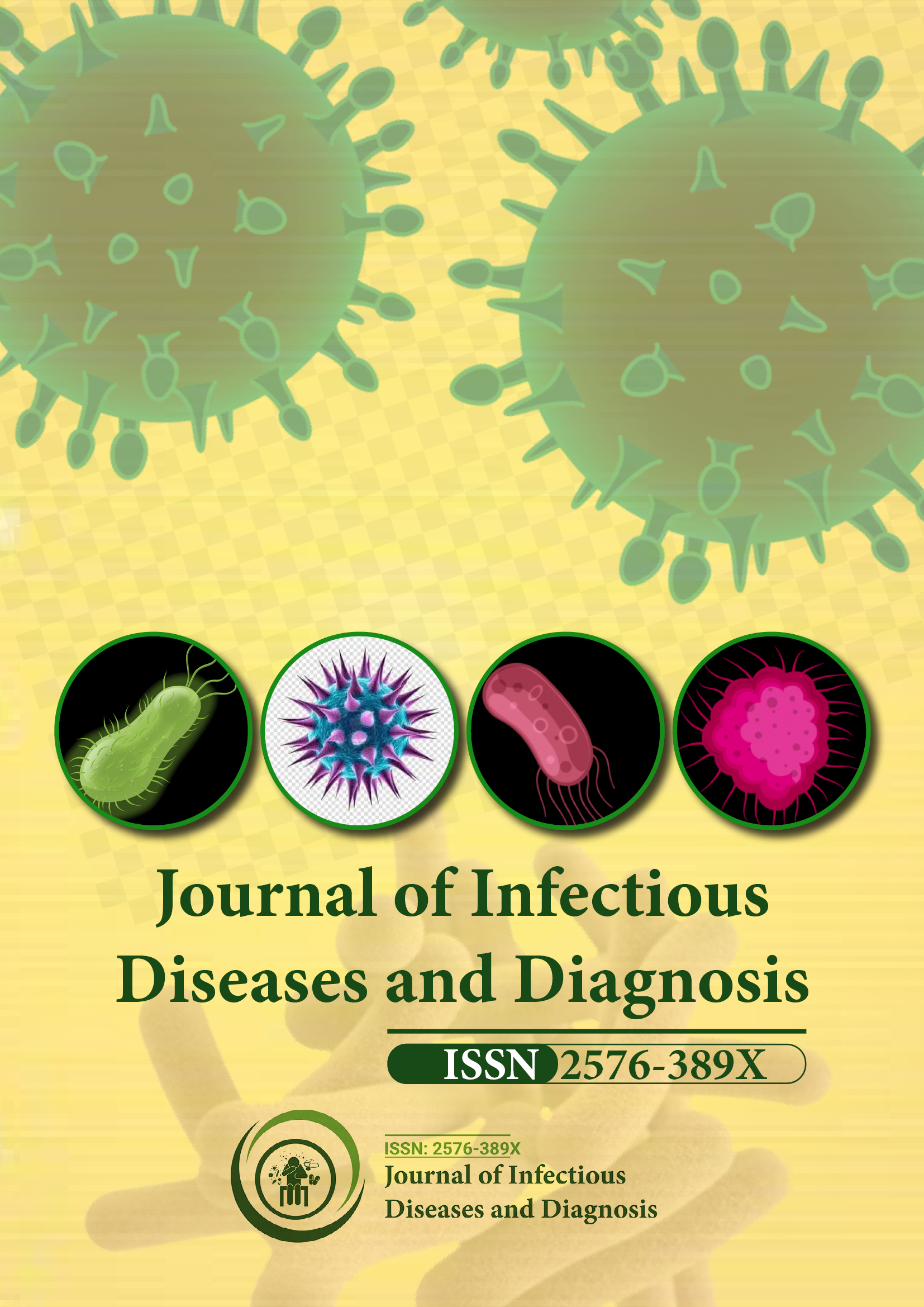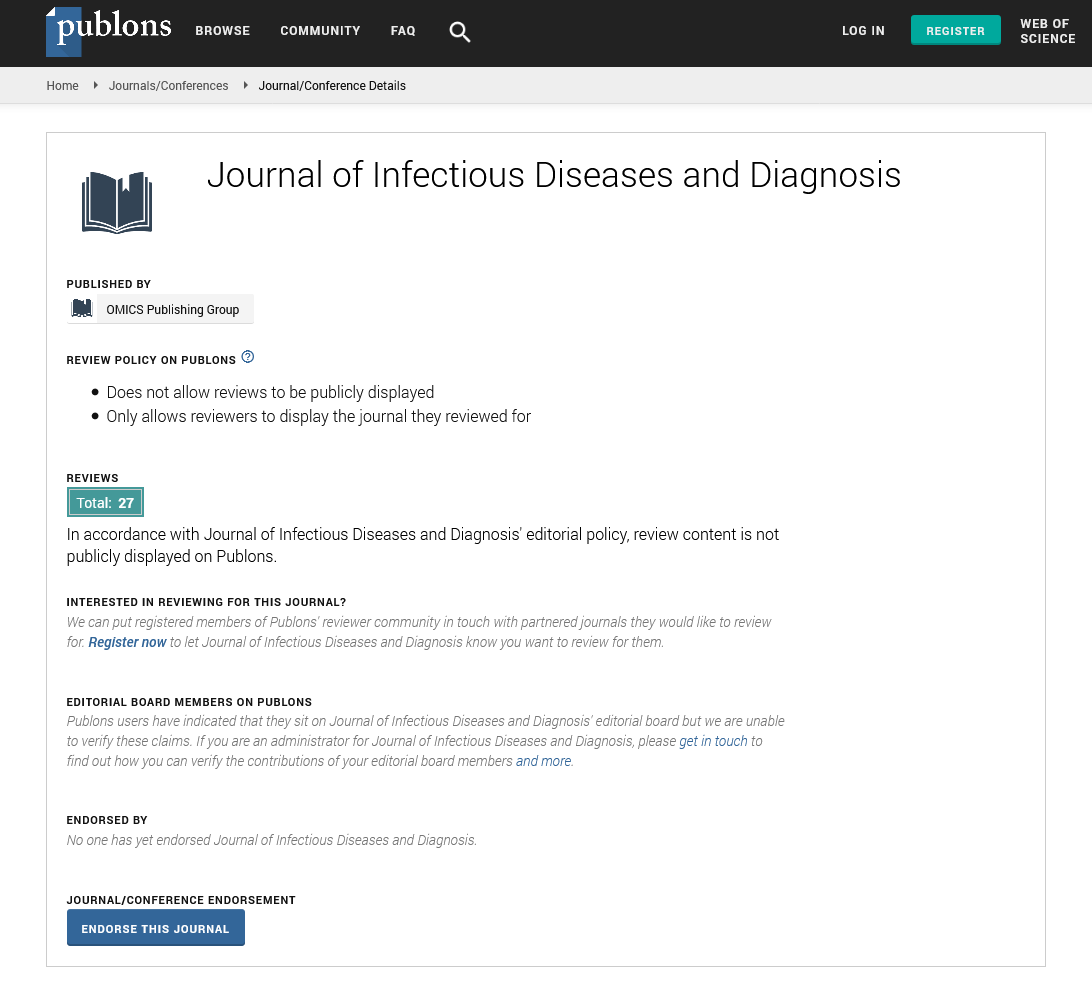Indexed In
- RefSeek
- Hamdard University
- EBSCO A-Z
- Publons
- Euro Pub
- Google Scholar
Useful Links
Share This Page
Journal Flyer

Open Access Journals
- Agri and Aquaculture
- Biochemistry
- Bioinformatics & Systems Biology
- Business & Management
- Chemistry
- Clinical Sciences
- Engineering
- Food & Nutrition
- General Science
- Genetics & Molecular Biology
- Immunology & Microbiology
- Medical Sciences
- Neuroscience & Psychology
- Nursing & Health Care
- Pharmaceutical Sciences
Opinion Article - (2025) Volume 10, Issue 3
Whole-Genome Sequencing in Hospital-Acquired MRSA: Insights into Transmission Dynamics and Outbreak Management
Carle Mark*Received: 30-Apr-2025, Manuscript No. JIDD-25-29299; Editor assigned: 02-May-2025, Pre QC No. JIDD-25-29299 (PQ); Reviewed: 16-May-2025, QC No. JIDD-25-29299; Revised: 23-May-2025, Manuscript No. JIDD-25-29299 (R); Published: 30-May-2025, DOI: 10.35248/2576-389X.25.10.334
Description
Methicillin-Resistant Staphylococcus Aureus (MRSA) remains a significant cause of hospital-acquired infections, associated with increased morbidity, prolonged hospitalization and high treatment costs. Traditional infection control relies on microbiological culture, anti-biograms and patient tracing to manage outbreaks. However, these methods often lack the precision required to differentiate between closely related strains or detect subtle transmission patterns. Whole-Genome Sequencing (WGS) has emerged as a powerful tool to uncover the genetic relationships between bacterial isolates and provide detailed insights into outbreak dynamics. This study evaluated the application of WGS in investigating a series of hospital-acquired MRSA cases, aiming to enhance outbreak containment and prevent further transmission.
The investigation was conducted at a 700-bed tertiary care hospital over a 12-month period. The infection control team observed a rise in MRSA cases within two general medical wards and the surgical intensive care unit. A total of 78 patients tested positive for MRSA from clinical or screening specimens during this period. All isolates were stored and subsequently subjected to WGS using a short-read platform with paired-end sequencing. Epidemiological data, including ward location, admission dates and healthcare worker assignments, were integrated with genomic findings to construct transmission timelines.
Initial phenotypic analysis showed that most MRSA isolates shared similar resistance profiles and belonged to the same spa type. However, WGS revealed distinct genetic clusters, indicating that more than one transmission chain was present. Single Nucleotide Polymorphism (SNP) analysis allowed for the classification of isolates into five genomic clusters. Two of these clusters were linked to specific wards and within each, isolates differed by fewer than 10 SNPs, consistent with recent transmission. Other clusters were unrelated, suggesting separate introductions rather than internal spread.
One cluster, comprising 22 isolates, was traced back to a common source within a medical ward. WGS showed minimal genetic variation among these isolates and timeline analysis revealed overlapping patient stays and shared healthcare staff. Environmental sampling from the ward surfaces and equipment identified MRSA contamination on two shared blood pressure cuffs, with sequences matching patient isolates. Targeted cleaning and replacement of the implicated equipment, along with staff re-education on hand hygiene, resulted in a sharp decline in new cases from that ward.
In contrast, another cluster in the surgical intensive care unit demonstrated a wider genetic variation. This group of MRSA isolates appeared over a four-month window and included patients admitted intermittently. WGS indicated that these isolates belonged to a lineage with greater genetic diversity, suggesting multiple introductions possibly from external sources or colonized patients upon admission. Routine screening was expanded to all surgical admissions and several asymptomatic carriers were identified, supporting the idea of undetected introduction rather than ongoing intra-hospital transmission.
The integration of WGS with traditional contact tracing also revealed hidden links between patients. In two cases, patients admitted to separate wards were found to be colonized with nearly identical MRSA strains. Further investigation uncovered that both had undergone procedures in the same radiology suite within hours of each other. Environmental testing of the suite revealed low-level contamination and enhanced terminal cleaning procedures were implemented.
WGS also aided in assessing the effectiveness of infection control interventions. For example, following an initial outbreak response, new MRSA cases were monitored for genetic relatedness to previous clusters. Most subsequent isolates belonged to unrelated lineages, suggesting that the outbreak had been contained and that new cases were isolated introductions rather than continuation of the earlier spread.
The use of genomic data provided additional benefits, such as the identification of resistance genes and virulence factors. All isolates were screened for the mecA gene, which conferred methicillin resistance and for the presence of Panton-Valentine leukocidin (PVL), a toxin associated with severe disease. Most outbreak-related strains lacked PVL, while sporadic isolates with high genetic divergence were more likely to carry PVL genes, underscoring the importance of strain characterization in clinical management.
Staff acceptance of WGS was initially mixed due to concerns about complexity and turnaround time. However, once the benefits in outbreak clarification became evident, clinical and infection control teams began to request genomic analysis for all MRSA cases associated with clusters or unusual patterns. The laboratory established a workflow to provide preliminary results within four days of isolate submission, allowing for timely interventions. Although WGS does incur higher upfront costs compared to standard typing, the precision and actionable information it provides justify its use, especially in large healthcare facilities with complex patient movement. This study demonstrated that WGS not only clarified transmission chains but also challenged initial assumptions based on phenotypic data alone. The identification of unrelated strains helped avoid unnecessary interventions and focus efforts on true clusters.
In conclusion, whole-genome sequencing represents a valuable tool in the investigation and management of hospital-acquired MRSA infections. By providing high-resolution genetic data, WGS enables detailed mapping of transmission pathways, distinguishes between related and unrelated cases and supports evidence-based infection control measures. Its integration into routine outbreak response can enhance hospital preparedness and improve patient safety. Although challenges remain in terms of cost and technical capacity, the benefits of incorporating WGS into surveillance programs are significant, particularly in high-risk settings where rapid containment of MRSA is essential. Continued investment in genomic infrastructure and interdisciplinary collaboration will further advance its role in infection prevention and control.
Citation: Mark C (2025). Whole-Genome Sequencing in Hospital-Acquired MRSA: Insights into Transmission Dynamics and Outbreak Management. J Infect Dis Diagn. 10:334.
Copyright: © 2025 Mark C. This is an open-access article distributed under the terms of the Creative Commons Attribution License, which permits unrestricted use, distribution, and reproduction in any medium, provided the original author and source are credited.

